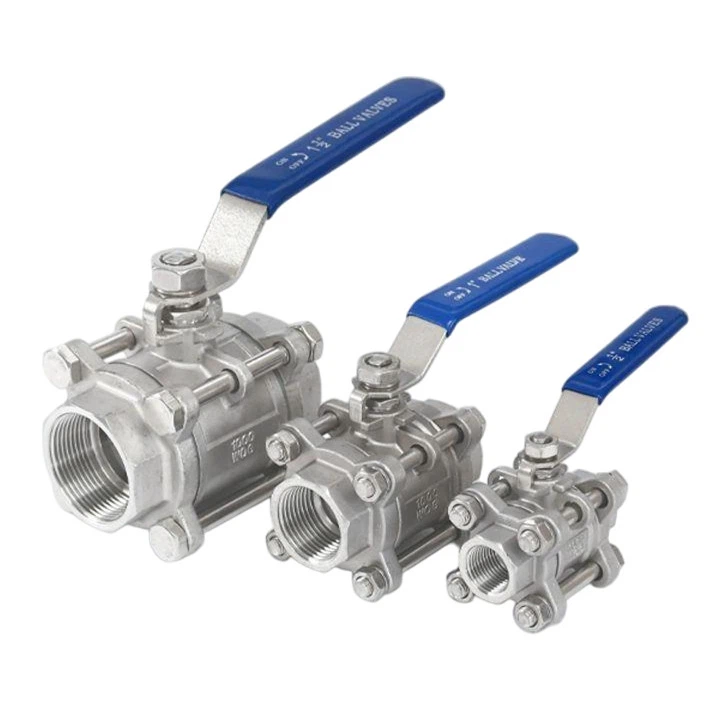Are One - piece Ball Valves compliant with industry standards?
Hey there! I'm a supplier of One - piece Ball Valves, and today I wanna chat about whether these valves are compliant with industry standards. It's a super important topic, especially for those in the market looking for reliable valves for their projects.
First off, let's understand what a One - piece Ball Valve is. A One - piece Ball Valve is a type of valve where the body is made in one single piece. This design offers some unique advantages. It's generally more compact compared to other types like the Two - piece Ball Valve and Three - piece Ball Valve. The single - piece construction also means fewer potential leak points, which is a big plus in many applications.
Now, when it comes to industry standards, there are several key ones that One - piece Ball Valves need to meet. One of the most well - known is the American National Standards Institute (ANSI) standards. These standards cover a wide range of aspects, including the dimensions, pressure ratings, and performance requirements of valves. For example, ANSI sets the rules for the size of the valve ports, the pressure it can handle without failing, and how well it should seal.
A One - piece Ball Valve that complies with ANSI standards is going to have consistent dimensions. This is crucial because it ensures that the valve can be easily integrated into existing piping systems. If the dimensions are off, it can lead to all sorts of problems, like improper fitting and potential leaks. The pressure ratings defined by ANSI are also essential. They tell us how much pressure the valve can withstand under normal operating conditions. A compliant One - piece Ball Valve will be able to handle the specified pressure without any issues, which is vital for safety and the proper functioning of the system.
Another important set of standards is from the International Organization for Standardization (ISO). ISO standards are recognized globally and are designed to ensure the quality and compatibility of products across different countries. For One - piece Ball Valves, ISO standards focus on things like the material quality, manufacturing processes, and testing procedures.
In terms of material quality, ISO standards specify the types of materials that can be used for different parts of the valve. For example, the ball inside the valve should be made of a material that is resistant to corrosion and wear. This ensures a longer lifespan for the valve and reduces the risk of breakdowns. The manufacturing processes are also strictly regulated. A compliant One - piece Ball Valve will be produced using methods that ensure consistent quality from one valve to the next. And the testing procedures defined by ISO are there to make sure that each valve meets the required performance criteria before it leaves the factory.
As a supplier, I can tell you that we go through a lot of hoops to make sure our One - piece Ball Valves are compliant with these standards. We start by carefully selecting the materials. We source high - quality metals and polymers that are known for their durability and performance. Then, during the manufacturing process, we have strict quality control measures in place. Every step, from machining the valve body to assembling the internal components, is closely monitored.
After the valves are manufactured, they go through a series of tests. These tests include pressure tests to check if the valve can handle the specified pressure, leak tests to ensure there are no unwanted leaks, and flow tests to measure how well the valve allows fluid to pass through. Only after a valve passes all these tests can it be labeled as compliant with industry standards.
But why is it so important for One - piece Ball Valves to be compliant with industry standards? Well, for one, it gives customers peace of mind. When you're buying a valve for a critical application, like in a chemical plant or a water treatment facility, you want to know that it's going to work as expected. A compliant valve is more likely to perform reliably over a long period, reducing the risk of costly downtime and repairs.
Compliance also helps with regulatory requirements. Many industries are subject to strict regulations regarding the equipment they use. Using compliant One - piece Ball Valves ensures that your operations are in line with these regulations, avoiding potential fines and legal issues.
Now, you might be wondering how One - piece Ball Valves compare to other types of ball valves in terms of compliance. The truth is that all types of ball valves, whether they're one - piece, two - piece, or three - piece, need to meet the same industry standards. However, the design of the One - piece Ball Valve can sometimes make it easier to achieve compliance in certain areas. For example, because it has fewer parts, there are fewer potential sources of non - compliance. But on the other hand, the single - piece construction can also present some challenges in terms of manufacturing and testing.


In conclusion, One - piece Ball Valves can and should be compliant with industry standards. As a supplier, I'm committed to providing valves that meet the highest standards of quality and performance. Whether you're in the oil and gas industry, the chemical industry, or any other field that requires reliable valves, you can trust that our One - piece Ball Valves will do the job.
If you're interested in learning more about our One - piece Ball Valves or are looking to make a purchase, I'd love to have a chat with you. We can discuss your specific requirements and find the perfect valve for your project. Don't hesitate to reach out and start the conversation about how we can work together to meet your valve needs.
References
- American National Standards Institute (ANSI) valve standards documentation
- International Organization for Standardization (ISO) valve standards documentation






